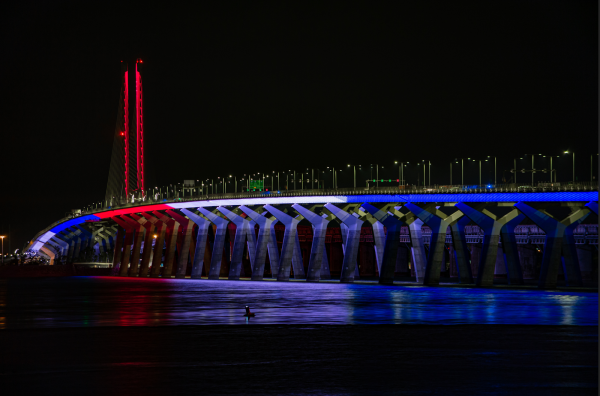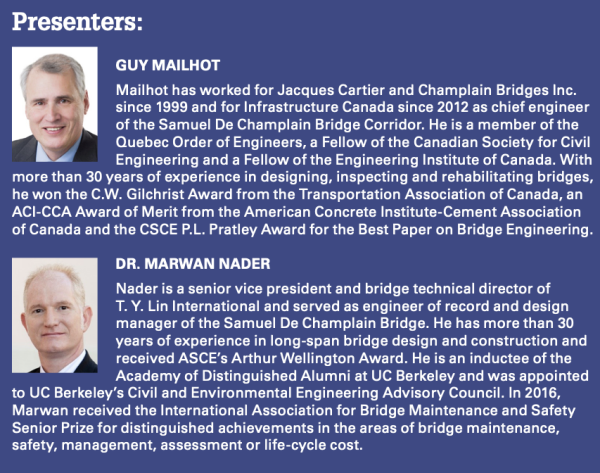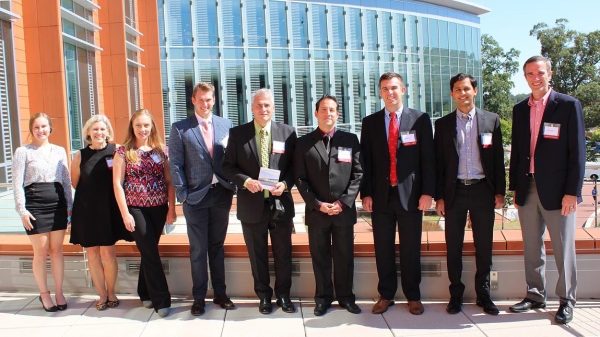photos courtesy of NBBJ
The 21st Annual Paul Zia Distinguished Lecture, “Design and Construction of the Rainier Square Redevelopment Project,” will be presented on Monday, Sept. 19, 2022 at 3 p.m. at the Stewart Theatre located in the Talley Student Union on NC State’s campus. An online interactive livestream will also be available.
The Paul Zia Distinguished Lecture Series was established in 2002 to showcase some of the world’s most exciting and challenging projects and the engineers who work to make them happen. The lecture series honors Professor Emeritus Dr. Paul Zia, a former professor and department head of CCEE and a structural engineer who is eminent in research, professional society leadership and practice. For more than 50 years, he has been engaged in teaching, research and consulting in many areas of concrete materials, reinforced and prestressed concrete structures, and construction, advising more than 60 master’s and doctoral students.
“Dr. Paul Zia contributed greatly to the field of civil engineering and influenced the careers of so many individuals,” said Dr. Morton Barlaz, department head of CCEE. “This lecture series was created not only to honor Dr. Zia, but also with the purpose of providing a link for existing students to the real world of engineering practice. Through the years, the lecture has evolved into an opportunity for students, researchers, practitioners and the general public to learn about exciting projects from around the world. I personally have learned a tremendous amount about civil infrastructure from attending these lectures over the last 12 years.”
Presenters include Ron Klemencic, PE, SE, Hon AIA, chairman and CEO, Magnusson Klemencic Associates and Dr. Amit Varma, Ph.D., Karl H. Kettelhut Professor of CE and director of Bowen Lab of Large-Scale CE Research at Purdue University. The speakers will present on various design and construction aspects of the 58-story mixed-use tower in Seattle, which uses the revolutionary SpeedCore shear wall system. Watch this video to learn more about this year’s topic. PDH credits will be available for attendees, and registration will open in mid-August.
Sponsorship opportunities are available. Sponsorships enable this event to be presented free-of-charge to the broader engineering community and support scholarships and student enhancement programs at NCSU. To inquire about sponsorships, please contact Amy Alexander with the Department of Civil, Construction, and Environmental Engineering at 919-515-7212 or ajmille9@ncsu.edu, or visit the lecture website.
All funds raised for this event are collected and managed by the NC State Engineering Foundation, a 501(c)(3) organization, tax ID 56-6046987.
2021 Lecture: Connecting Montreal

The 2021 Zia Lecture focused on the Samuel de Champlain Bridge, which runs over the Saint Lawrence River in Canada. The 2.1-mile-long structure is a sight to behold, with its 200-foot width making it one of the widest cable- stayed bridges with two planes of cables in the world.
But the bridge plays a much more important role than as a stunning visual landmark — it serves as the connector between the Island of Montreal and the South Shore suburbs of Quebec, Canada, replacing the deteriorated, 57-year-old similarly named Champlain Bridge. The new bridge boasts eight lanes, a multiuse lane for cyclists and pedestrians, and the South Shore branch of the Réseau express métropolitain light rail system. Using stainless steel and high-performance concrete, it is built to last at least 125 years.
 The 2021 Paul Zia Distinguished Lecture on the design and construction of the Samuel de Champlain Bridge highlighted the intensive durability demands of the project and the unique design features used to meet these objectives in an accelerated construction schedule of 42 months.
The 2021 Paul Zia Distinguished Lecture on the design and construction of the Samuel de Champlain Bridge highlighted the intensive durability demands of the project and the unique design features used to meet these objectives in an accelerated construction schedule of 42 months.
At the 2021 lecture, Guy Mailhot, chief engineer of the Samuel de Champlain Bridge, discussed the existing conditions, challenges and durability objectives required of the new bridge. Due to temporary repairs to keep the old bridge operational, the new bridge was required to be completed on an accelerated schedule. Dr. Marwan Nader, engineer of record, explained how the design of the bridge met the various specification requirements for durability of the 125- year intended lifespan of the structure. The design decisions and materials selected had to be compatible with the harsh winter conditions including ice flows as well as seismic, wind, vessel collision and scour.
“The bridge is one of Canada’s most important bridges,” Mailhot said. “It links the Island of Montreal to the South Shore, and it plays a very vital role in the Canadian economy. … There was a high expectation from the community for an iconic bridge, a bridge that would be easy to recognize. It is a gateway to Montreal. We think we achieved that objective by having an asymmetrical cable bridge, we have very distinctive W-shaped pier gaps, we have a curved bridge, and we have a sophisticated architectural lighting system.”

The construction approach took full advantage of precast and offsite modular construction to maximize the construction efficiency during the summer construction window and required collaboration of workers from around the world. The total project cost was $3.3 billion, which includes a new transportation transit corridor in Montreal. To meet the diverse challenges of this project, precast piers were used to support W-frame steel bent segments that were post-tensioned together to support the bridge decks. The seaway crossing was made with a 787-foot span cable-stayed bridge supported by dual 551-foot concrete towers that support the cables in a harp configuration to suspend the bridge deck over the shipping channel.


